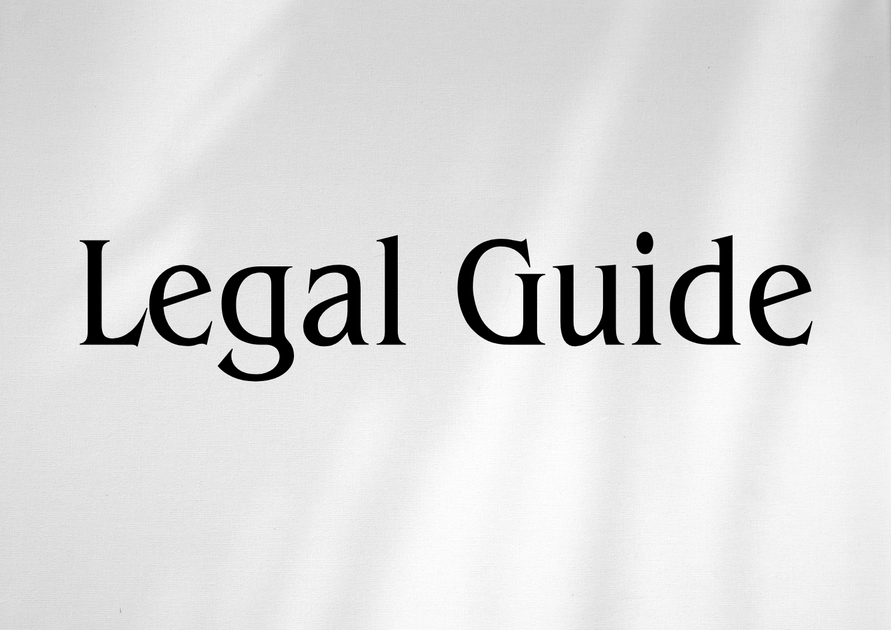Introduction
Enforcing real estate judgments in the United Arab Emirates is a cornerstone for upholding contractual integrity and maintaining investor confidence in the region’s vibrant property sector. With ongoing growth across both commercial and residential markets, the UAE’s legal framework for enforcing real estate judgments has evolved—most notably following key updates to Federal Law No. 11 of 1992 concerning the Civil Procedures Law, as amended by Federal Decree Laws No. 10 of 2017 and No. 13 of 2020. Understanding the mechanics of post-judgment enforcement, recognizing recent regulatory changes, and anticipating potential pitfalls is critical for developers, corporate entities, investors, and asset managers seeking remedial action or compliance assurance in property disputes. This comprehensive expert analysis explores the current enforcement regime, its practical applications, and the strategies necessary to achieve timely, compliant outcomes in the UAE’s real estate landscape.
This article addresses:
- The legal framework and procedures for enforcing real estate judgments.
- Comparative analysis of key legal changes impacting enforcement.
- Tactical insights for businesses navigating the enforcement landscape.
- Risks of non-compliance and best practice recommendations.
Table of Contents
- Overview of the UAE Legal Framework for Real Estate Judgment Enforcement
- Procedures for Enforcing Real Estate Judgments
- Comparative Legal Analysis: Old vs New Laws
- Key Regulatory Authorities and Jurisdictions
- Practical Insights and Case Studies
- Risks of Non-Compliance and Compliance Strategies
- Future Outlook and Conclusion
Overview of the UAE Legal Framework for Real Estate Judgment Enforcement
Relevant Laws and Decrees
The enforcement of real estate judgments in the UAE is governed by several cornerstone legislative instruments:
- Federal Law No. 11 of 1992 (Civil Procedures Law), as amended by Federal Decree Law No. 10 of 2017 and No. 13 of 2020.
- The Real Estate Regulatory Authority (RERA) regulations in Dubai and counterparts in other Emirates.
- Cabinet Resolution No. 57 of 2018 concerning the executive regulations of the Civil Procedures Law.
- Local real estate and judicial execution laws in special jurisdictions (e.g. DIFC, ADGM).
The above legislative corpus frames a dual-tiered enforcement system: (1) enforcement through local courts, and (2) enforcement through “free zone” courts with their own execution regimes. The Civil Procedures Law, particularly Articles 208-238, outlines the standardized procedures for execution (ta’nif), asset attachment, auction, and the transfer of property pursuant to a court order.
Recent Legal Developments and UAE Law 2025 Updates
Recent changes—like the 2020 and 2021 amendments—have streamlined judgment enforcement, with an emphasis on digital procedures, greater transparency, and reduced bureaucratic delay. Both local and foreign real estate judgments have become more enforceable thanks to the UAE’s commitments under the New York Convention (for foreign arbitral awards) and bilateral judicial cooperation treaties.
Practical Importance
Given the UAE’s position as a magnet for real estate investment, effective enforcement underpins property rights, deters default, and provides a foundation for investor confidence. Tailored compliance strategies and timely action are more critical than ever, especially under new regulatory scrutiny for cross-border transactions and anti-money laundering (AML) obligations.
Procedures for Enforcing Real Estate Judgments
Step 1: Obtaining a Final and Executable Judgment
A judgment must be final and executable (“Mashrou’a al-tanfidh”)—meaning all avenues of appeal have been exhausted or expired—before any enforcement can commence (Civil Procedures Law, Art. 212). Interim measures, such as precautionary attachment, may be sought earlier to secure assets.
Step 2: Filing the Enforcement Application
The creditor must file an enforcement request (talab tanfidh) with the competent execution court. For real estate, this is usually in the jurisdiction where the property is located. The application requires:
- Original or certified copy of the judgment
- Proof of service on the debtor
- Details of the property/assets
- Identification and supporting documentation
Step 3: Execution Proceedings by the Court
The execution judge (Qadi al-Tanfidh) will impose a payment deadline (typically 15 days) upon the debtor. If payment is not made voluntarily, the judge may authorize compulsory enforcement measures:
- Attachment and seizure of real property
- Listing the property for public auction
- Issuance of freezing orders on registered assets
- Travel bans or detention of debtors in extreme circumstances (in line with Article 319, as amended)
Step 4: Sale by Public Auction
The court will engage certified real estate experts to value the attached property, notify relevant authorities (such as RERA or the Land Department), and oversee transparent public auction procedures. Net proceeds are applied towards the judgment debt and related execution costs per Civil Procedures Law (Art. 254-259).
Step 5: Final Distribution and Clearance
Funds are distributed, mortgagees or other secured creditors are satisfied in legal order of priority, and title transfer is registered officially to the successful bidder. Full legal effect is given only upon completion of the registration process with the Land Department or its equivalent.
Suggested Visual: Enforcement Process Flow
Suggested infographic: Stepwise flowchart illustrating the enforcement process, from judgment to auction and fund distribution.
Comparative Legal Analysis: Old vs New Laws
Recent legislative amendments have modernized the enforcement process, focusing on digital transformation, creditor protections, and increased accessibility. Below is a comparative table summarizing key differences:
| Feature | Old Law (pre-2017/2018) | New Law (post-2018/2020) |
|---|---|---|
| Application Method | Manual submission, in-person process | Online portals and digital submissions mandated |
| Foreign Judgment Enforcement | Limited, complex exequatur process | Simplified procedures—reciprocity and conventions fully recognized |
| Execution Judge’s Powers | Narrow, requiring explicit statutory authority | Broader discretionary powers and interim measures |
| Timeframes | Indefinite delays due to manual notifications and contestations | Statutory timeframes for notifications and actions; fewer administrative delays |
| Asset Location | Restrictive—only assets within the specific Emirate | Expanded—creditor can enforce against national assets under unified registry |
Consultancy Insight
The shift towards digitization and transparency directly benefits creditors, reduces risks of asset dissipation, and ensures swifter remedies. However, sophisticated compliance mechanisms are now required to avoid procedural pitfalls.
Key Regulatory Authorities and Jurisdictions
Local Courts vs Free Zone Courts
| Jurisdiction | Scope | Enforcement Mechanism |
|---|---|---|
| Onshore (Civil) Courts | Mainland UAE properties and disputes | Civil Procedures Law and local enforcement units |
| DIFC/ADGM Courts | Properties within free zones or subject to party agreement | Own enforcement regimes; judgments convertible for onshore enforcement via local courts |
Regulatory Authorities
- Dubai Land Department (DLD): Registration and transfer of title, support for execution court.
- RERA: Regulates brokers and licensing in Dubai.
- Abu Dhabi Judicial Department (ADJD).
- Sharjah Real Estate Registration Department and others for local assets.
Judicial Coordination Enhancements
Under the Judicial Cooperation Agreements and Cabinet Resolution No. 57/2018, cross-Emirate coordination in asset tracing, attachment, and sale is now harmonized—closing historic gaps that benefited evasive debtors.
Practical Insights and Case Studies
Consultancy Insights: Real-World Scenarios
Prudent planning and proactive compliance significantly increase enforcement success in the UAE’s evolving property landscape:
Example 1: Commercial Lessor vs Tenant Default
Scenario: A commercial landlord in Dubai obtains a judgment against a corporate tenant for unpaid rent, with the premises mortgaged to a local bank. Steps:
- Landlord files enforcement with Dubai Execution Court.
- Temporary attachment order is swiftly issued and notified to the Land Department.
- Execution court ranks mortgagee bank as first-priority creditor; auction proceeds distributed accordingly.
- Digital notices expedite the auction, allowing rapid sale and funds recovery.
Example 2: Foreign Investor Securing an Award under the New York Convention
Scenario: A foreign entity secures an arbitral award in its home jurisdiction under the New York Convention. Steps:
- The award is submitted to the UAE execution court for recognition and enforcement.
- Court verifies compliance with procedural requirements and reciprocity.
- Real estate assets identified in Abu Dhabi are attached for sale.
- The property is auctioned; proceeds satisfy the award debt.
Issues and Resolutions: Hypothetical Example
If the debtor files frivolous appeals to delay enforcement, new laws empower execution judges to continue action concurrently (except where a stay is expressly granted).
Suggested Visual: Compliance Checklist
Checklist graphic of steps to ensure compliance throughout enforcement—from documentation and filings to regulatory notifications and audit trails.
Risks of Non-Compliance and Compliance Strategies
Risks
- Delay and Asset Dissipation: Lax adherence to timeframes and notification procedures can enable debtors to dispose of assets before attachment, resulting in irrecoverable losses.
- Procedural Failures: Incomplete documentation, misfiling, or service lapses will result in rejection or costly delays in enforcement, potentially nullifying judgments.
- Regulatory Penalties: Non-compliance with anti-money laundering and counter-terrorism financing regulations may trigger criminal investigations or administrative sanctions for creditors and judicial officers (refer to Federal Decree-Law No. 20 of 2018).
Compliance Strategies
- Engage specialized local counsel to manage the enforcement process and regulatory communications.
- Use digital portals for submission and tracking; maintain a documented audit trail predating enforcement and post-judgment action.
- Anticipate and prepare for appeals by securing precautionary measures as early as possible.
- Verify asset registers promptly to avoid surprises regarding encumbrances or competing claims.
Suggested Visual: Penalty Comparison Chart
Table comparing consequences of procedural non-compliance for both debtors and creditors, with references to relevant regulations and possible sanctions.
Future Outlook and Conclusion
The UAE’s legal reforms continue to bolster commercial trust, efficiency, and investor protection in the real estate sector. As new technologies, international treaties, and government digitization projects gain momentum, the ability to swiftly and effectively enforce property judgments will only increase. Forward-thinking organizations must prioritize compliance, standardized documentation, and counsel engagement to realize the full benefits of the enforcement regime.
Looking ahead, organizations should adopt best practices for compliance:
- Monitor ongoing statutory reforms and Cabinet Resolutions, especially pending 2025 UAE law updates.
- Implement robust governance for transaction due diligence, ensuring properties are unencumbered and records are accurate.
- Engage in strategic risk assessments, especially for cross-border enforcement scenarios involving foreign parties.
- Leverage new technologies for legal document retention, case management, and compliance reporting in line with Ministry of Justice guidelines.
In summary, enforcing real estate judgments in the UAE now involves a blend of procedural rigor, technological engagement, and regulatory acumen. Staying informed and agile will mitigate risks and maximize the prospects of successful enforcement—ensuring that real estate assets and contractual rights are fully protected amidst the nation’s dynamic legal and economic environment.




